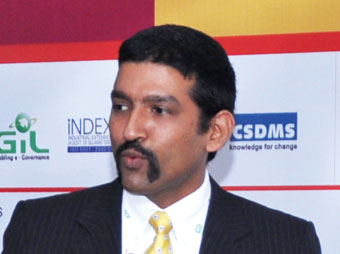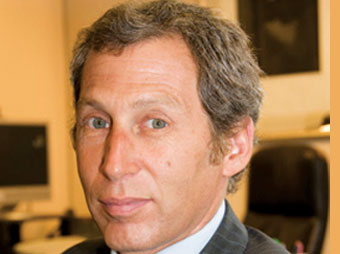
Rajendra P Gupta, Chairman, Board of Directors, HIMSS Asia Pacific India Chapter, foresees a contest between Tablets and Smart- Phones, between Windows, Apple and Android, rather than one between a user and non-user of mHealth by 2015. He talks about the challenges faced by the industry.
www.himssindia.org

 Telemedicine needs to be thoroughly understood by the healthcare professionals, experts and leaders to create sustainable business models. Telemedicine growth story can be studied with an evolution cycle which follows the path of advocacy”policy” infrastructure” issues of capacity building”funding”financial models” research” adoption and mass deployment. Telemedicine in India is still in the policy phase where the year 2011 has been a breakthrough year in terms of developing new policy.
Telemedicine needs to be thoroughly understood by the healthcare professionals, experts and leaders to create sustainable business models. Telemedicine growth story can be studied with an evolution cycle which follows the path of advocacy”policy” infrastructure” issues of capacity building”funding”financial models” research” adoption and mass deployment. Telemedicine in India is still in the policy phase where the year 2011 has been a breakthrough year in terms of developing new policy.
The biggest challenge lies at the government level and policy makers who do not understand the concept of ICT in health. So far the Directorate General of Health Services, Ministry of Health & Family Welfare, Government of India, and the WHO Country Office in India have jointly formulated policy 2.12. Promoting use of information technologies like Tele- Medicine to improve access of NCD services, National Policy on Information Technology, (NPIT) 2011 was thus introduced to focus on application of technology-enabled approaches to overcome monumental developmental challenges in education, health. The policy helps to leverage ICT for key social initiatives like education, health, rural development and financial services to promote equity and quality. The policy determines to undertake implementation of Mission Mode Projects (MMPs) in Health, Education, Financial Services, PDS etc. to improve the quality and accessibility of such services.
India is the IT Hub for the world, it has technically capable manpower, EMR industry is growing tablets and phones are cheaper, 3G is available, 4G is expected in 2012, and mobile health applications are growing at a fast pace

There are few challenges before Telemedicine takes over and there is improvement in health parameters in the country. The country has 900 million plus mobile phone users, over 8500 medical applications are available on cell phones. The number of internet users has increased to 100 billion and few hospitals have dedicated telemedicine facilities. A major area of concern is to initiate human resource development for eHealth and mHealth. Medical Council of India is willing to push for Telemedicine courses, but MBBS is already cramped with too much teaching material in the current 5 year curriculum. The council needs to create regional training centres along with specialised short term courses for healthcare professionals in telemedicine. Another challenge faced by the telemedicine programmes is funding. All major projects – notfor- profit and Trust run like Apollo telemedicine – need to be encouraged. Government un projects have not gone Beyond the Pilot phase. Government should showcase success stories for adoption especially in three issues – infant mortality, chronic diseases, early diagnosis and prevention. The industry needs to start doing projects that are financially viable. The data shared during the research should be transparent. It is also observed that unless we invest in research, we will not be able to convince the medical fraternity to use telemedicine. A joint initiative of MCIT, DMAI & TSI” Project iHope “ Improving Healthcare Outcomes by practicing eHealth “needs to be spread around the country. Legal and regulatory issues should be sorted out to ensure provider / user adoption. Telemedicine has to become an important component of rural health, EMRs needs to be adopted in clinical practice, tablets should be used for medical education and this is the best way to get doctors to use latest technology. If 100 million consumers used health related applications on mobile phones, the country would have reached the threshold of going Mass scale on Telemedicine.
We need to encourage innovative ideas and promote initiatives like EMRI“ Innovative emergency response model, HMRI “ Remote advice and mobile Solutions, Aravind Eye “ Low cost eye-care model leveraging Telemedicine and mobile based high risk expectant mothers tracking system “ Maternal Mortality dropped by 93 percent after the launch of the programme. We believe that it is time to prioritise Inclusive Health care as a key component of the Healthcare policy and delivery. But without Telemedicine the aim of providing inclusive healthcare will remain a distant dream.
Be a part of Elets Collaborative Initiatives. Join Us for Upcoming Events and explore business opportunities. Like us on Facebook , connect with us on LinkedIn and follow us on Twitter , Instagram.











